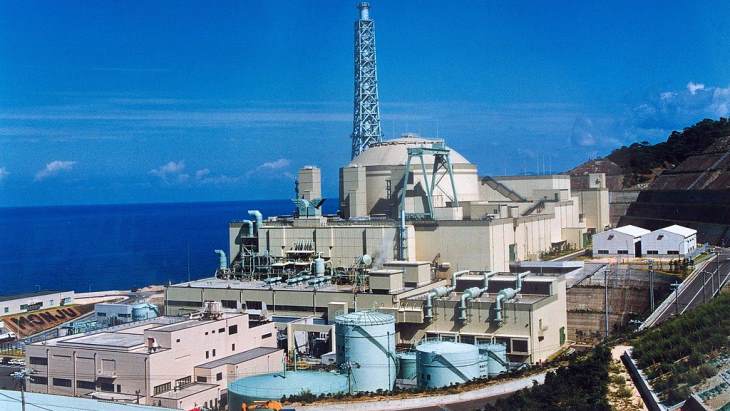Defuelling completed at Japan's Monju reactor
All the fuel assemblies at the Monju prototype fast breeder reactor (FBR), which is being decommissioned, have now been transferred to a water-filled storage facility, the Japan Atomic Energy Agency (JAEA) has announced.

The Monju FBR (Image: Nuclear Fuel and Power Reactor Development Corporation / IAEA)
When decommissioning of the reactor began in 2018, 160 fuel assemblies were being stored within a sodium-filled storage tank, while 370 fuel assemblies remained within Monju's sodium-filled core. JAEA began by removing the assemblies from the sodium-filled tank into the water-filled pond, then transferring assemblies from the core into the sodium-filled tank prior to being moved to the storage pond.
JAEA has now announced that the final fuel assembly was removed from the sodium-filled tank and placed in the water-filled pond on 13 October.
"As a result, fuel assembly removal, which is the main work in the first phase of the decommissioning plan, all work (530 assemblies) has been completed," it said.
"The used fuel will be transferred to domestic and foreign operators with licenses for reprocessing in Japan or in countries with which Japan has signed agreements for cooperation on the peaceful uses of nuclear energy," according to JAEA.
JAEA submitted a detailed plan to decommission Monju, in line with the government's basic policy, to the Nuclear Regulation Authority (NRA) in December 2017. The plan comprises four stages. In the initial stage, JAEA will transfer all fuel to an on-site storage pool by fiscal 2022. In the second and third stages, the liquid sodium coolant will be extracted from Monju and related equipment will be dismantled. The reactor building will be demolished and removed by fiscal 2047 in the final stage. The NRA approved that plan in March 2018.
A key part of Japan's nuclear energy programme, the 280 MWe Monju FBR in Tsuruga City, Fukui Prefecture, initially started in 1994. However, it was shut down after just four months when about 700 kilograms of liquid sodium leaked from the secondary cooling loop. Although there were no injuries and no radioactivity escaped plant buildings, the operator tried to conceal the scale of the damage. It eventually restarted in May 2010 but has not operated since refuelling equipment fell into the reactor vessel during a refuelling outage later that year. The equipment was subsequently retrieved and replaced but the NRA did not permit the reactor to restart.
In November 2015, following concerns over equipment inspections, the NRA determined JAEA was not competent to operate the reactor. In December 2016, the government formally announced its decision to decommission the idled Monju reactor.
The decommissioning of Monju will take 30 years and cost more than JPY375 billion (USD2.5 billion), the government estimates. This includes JPY225 billion for maintenance, JPY135 billion for dismantling the plant and JPY15 billion for defuelling and preparations for decommissioning.
Researched and written by World Nuclear News
- China Institute of Atomic Energy
- Nuclear Power Institute of China
- Southwestern Institute of Physics
- China Nuclear Power Operation Technology Corporation, Ltd.
- China Nuclear Power Engineering Co., Ltd.
- China Institute for Radiation Protection
- Beijing Research Institute of Uranium Geology (BRIUG)
- China Institute of Nuclear Industry Strategy (CINIS)
- China Nuclear Mining Science and Technology Corporation


